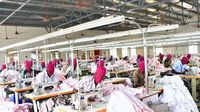On August 16, 2025, Tamil Nadu Chief Minister M K Stalin sent an urgent letter to Prime Minister Narendra Modi, warning that up to 3 million jobs in Tamil Nadu’s textile and apparel sector were at immediate risk. The culprit? A sweeping 50% tariff imposed by the United States government on Indian exports—a move that has sent shockwaves through one of India’s most vital industries and sparked a scramble for solutions across the country’s manufacturing landscape.
India’s textile and apparel sector is no small player. Employing 7.5 million people in Tamil Nadu alone, it stands as the nation’s second-largest employment provider after agriculture, according to reporting by businessline and Ainvest. The new U.S. tariffs, announced earlier in 2025, have landed like a thunderbolt, threatening not just the livelihoods of millions in the southern state but also the stability of a sector that accounts for over 15% of India’s total exports.
For companies like Pearl Global Industries and Raymond, which derive between 50% and 55% of their revenue from U.S. markets, the tariffs spell trouble. The U.S. International Trade Commission (USITC) has observed that India’s textile sector, while vertically integrated, does not enjoy the same cost advantages as rivals such as Vietnam and Bangladesh—countries whose tariffs are as low as 10% to 20%. The immediate impact? Margin erosion, destabilized supply chains, and a flurry of production shifts as firms hunt for more hospitable markets.
“India is the second-largest producer of cotton after China, which provides a major advantage compared to competitors like Bangladesh, Vietnam or Sri Lanka,” said A. Vijay Anand, CEO of Knit Gallery, in an interview with businessline. This raw material base is a key reason India contributes about 12–13% of global textile export earnings, ranking third worldwide. Sanjay Jain, Group CEO of PDS Limited, added, “India holds nearly 11% market share, shipping $6.5 billion annually. While the U.S. leads in volumes and Australia in premium long-staple cotton, India’s strength lies in its cultivation base, competitive pricing and ability to supply a wide range of cotton types to markets such as Bangladesh, Vietnam and China.”
Yet, even India’s deep-rooted advantages are being tested. The tariffs have hit hardest in textiles and apparel, but the pain is not evenly spread. India’s pharmaceutical and IT sectors have remained relatively insulated, with the U.S. exempting generic drugs, active pharmaceutical ingredients, and IT services from the new duties—an acknowledgment of their strategic importance to American healthcare and business.
To survive, Indian companies are making tough choices. Pearl Global Industries, for example, has redirected 16–18% of its U.S.-bound production to Vietnam and Bangladesh, leveraging the lower tariff rates and established supply chains in these countries. Raymond is considering a $50–75 million production shift to Ethiopia, where it already benefits from a 10% duty rate. These are not isolated moves. According to Ainvest, Vietnam’s textile exports to the U.S. grew by 25.13% in the first half of 2025, with Bangladesh’s apparel exports surging by the same percentage. The migration of manufacturing is not just a temporary fix—it’s a sign of deeper, structural change in global trade.
But is it really that easy to switch suppliers? Not quite, say industry insiders. “It’s very difficult to immediately switch to new suppliers in new countries. Initially, there were talks of overcoming the 25% tariff by sharing costs or using LDP shipment modes, but with the full 50% duty, much of the business has come to a standstill,” Anand explained. Shiraz Askari, President of Apollo Fashion International Limited, pointed out that the challenges extend to leather as well: “The 50% U.S. tariff presents a severe short-term challenge, and some contraction in orders is likely as buyers explore alternate sourcing in FTA markets. However, these shifts take time.”
India’s trade agreements do offer some relief, but not enough to offset the loss of the U.S. market. Free-trade deals with the UAE and Australia provide limited cushion, and a pending agreement with the UK—though signed—may take up to nine months for parliamentary approval. “India’s deals with the UAE and Australia, and pending pacts with the UK and EU, create tariff-free channels into regions with strong growth potential. But the U.S. will remain the centrepiece,” Jain noted. Tariff differentials over Bangladesh and Vietnam will influence buying patterns, but these shifts are expected to be gradual.
Meanwhile, exporters are hedging their bets by diversifying into the Middle East, East Africa, and Latin America. The Middle East offers tariff advantages via the India–UAE FTA; East Africa is emerging as a cost-competitive hub; and nearshoring to the U.S. from Latin America is gaining traction. Rahul Mehta, Chief Mentor at the Clothing Manufacturers Association of India (CMAI), summed up the lesson: “We cannot depend on any single market. Exporters must broaden their market and product base and even look at the domestic market, which itself is worth $100 billion. The short run will be painful, with financial stress, job losses and factory closures. But in the long run, there are enough opportunities globally and domestically for Indian exporters to revive and regain strength.”
India’s integrated supply chain remains a unique asset. Few countries can match its ability to combine raw material production, spinning, weaving, processing, and garmenting at scale. “India offers buyers cost efficiency, flexibility in order sizes and the ability to move from raw fibre to fully packaged apparel within the same ecosystem,” Jain pointed out. Beyond cotton, India leads in hand embroidery, value-added garments, handlooms, khadi, and jute—niches less affected by tariffs, and where Indian craftsmanship stands virtually unrivaled.
There’s also a silver lining in the form of industrial diversification. The “China Plus One” strategy—where companies diversify supply chains away from China—has brought fresh investments into India, particularly in electronics manufacturing and renewable energy. In 2025, Apple’s suppliers in India, including Foxconn and Tata Electronics, exported $11 billion worth of goods. Meanwhile, Indian giants like Reliance Industries and Adani Group are expanding renewable energy exports to the U.S. and Europe, sectors currently exempt from tariffs. Supported by production-linked incentives, green manufacturing is emerging as a bright spot for India’s future exports.
For investors, all of this means a more nuanced approach is needed. The key, according to Ainvest, lies in sector rotation—prioritizing those with tariff exemptions or diversification potential, such as pharmaceuticals and renewable energy. Southeast Asia, particularly Vietnam and Bangladesh, is likely to keep attracting U.S. sourcing shifts, while currency volatility and commodity price swings add another layer of complexity to India’s export competitiveness.
In the end, the Trump-era tariffs have forced a painful reckoning for India’s textile and apparel sector. The migration of manufacturing to Vietnam, Bangladesh, and Ethiopia is not just about escaping tariffs, but a reflection of broader shifts in global supply chains. Yet, India’s unique strengths—its cotton base, integrated ecosystem, and skilled workforce—ensure it remains a pivotal piece of the global textile puzzle. The road ahead may be bumpy, but adaptability, diversification, and a focus on value-added niches could help India weather the storm and emerge stronger in a fragmented trade world.

